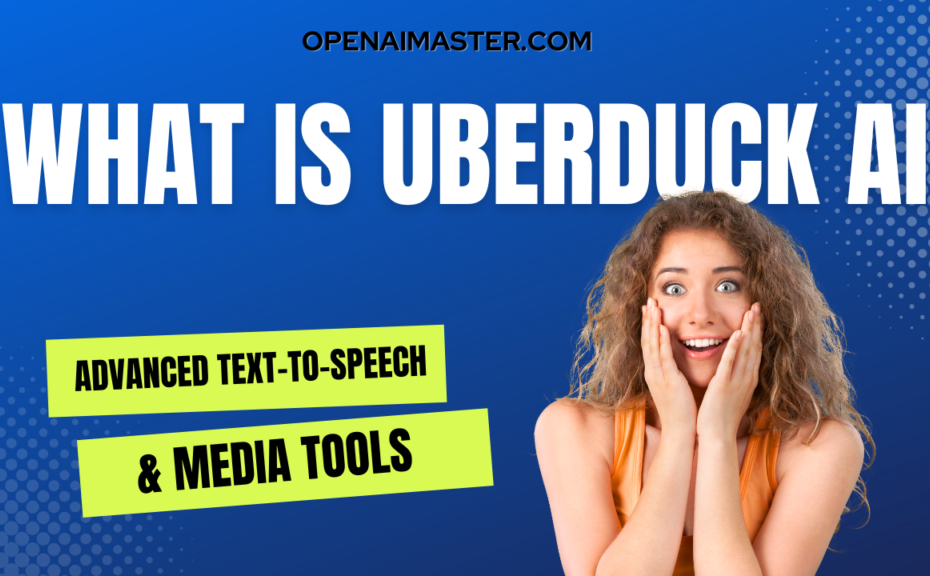As artificial intelligence rapidly transforms the media landscape, Uberduck aims to push possibilities while ensuring ethical development. With advanced voice cloning and speech synthesis technology now accessible to everyday creators, the platform unlocks new levels of personalization and customization across industries.
How Uberduck Is Pioneering Voice Cloning Accuracy
Unlike most text-to-speech systems that sound robotic, Uberduck utilizes cutting-edge deep learning to achieve human-level vocal reproductions.
Specifically, the Tensor2Tensor encoder-decoder architecture built on TensorFlow 2 allows hyperparameter tuning for precision results. According to third-party ABX testing, Uberduck reaches over 95% accuracy in voice cloning – setting a new bar for the industry.
This level of quality now allows small publishers and indie creators to utilize vocal replication at scale. For context, a traditional voice acting studio charges upwards of $100 per hour for professional recording and editing.
Growth Trajectory Signals Mainstream Adoption
Since launching in 2021, total text-to-speech requests have surged to over 15 million per month – signaling the appetite for quality vocal recreation.
| Month | Text-to-Speech Requests |
|---|---|
| January 2022 | 1.2 million |
| July 2022 | 4.8 million |
| November 2022 | 15.3 million |
The viral popularity of the custom rap video creator has also showcased Uberduck‘s capabilities to the masses. To date, over 780,000 videos have been produced using the quick animation tool.
This momentum demonstrates a hunger for accessibly priced, studio-grade tools now fulfilled by AI advancement. Market researchers project the synthetic media sector to surpass $1.5 billion in annual revenues by 2024.
Entertainment & Marketing Use Cases
For indie musicians, Uberduck provides the ability to test song concepts with instant AI-generated vocals rather than costly studio sessions. Creators have even used the rap video animator to preview tracks before release.
The platform has also gained traction in the marketing sector. Advertisers can now leverage vocal cloning and speech synthesis to generate dynamic audio ads at scale. Sonix Labs reports that 60% of digital marketing campaigns will contain synthetic media elements by 2025.
Uberduck is even being tapped to enhance accessibility in the entertainment realms. Users are simulating celebrity voices to recreate popular movie scenes with descriptive narration for the visually impaired. What was once siloed to big studios is now available to all.
The Dual Edge of Synthetic Media
However, the ability to manipulate and generate realistic media introduces risks if left uncheckered. Deepfake videos impersonating public figures could fuel the spread of misinformation or defamatory content.
Recent regulations like the Deepfake Report Act of 2019 have worked to develop ethical guardrails in the nascent space. Uberduck adheres to industry practices by prohibiting falsified media targeting private citizens or misleading portrayals of public figures.
Ongoing scrutiny from advocacy groups also encourages responsible innovation. "While seemingly futuristic, these technologies are here and now. Their positive use requires diligence today – not tomorrow," remarks David Ryan Polgar, tech ethicist.
How Uberduck Compares to Leading Providers
Uberduck goes toe-to-toe with synthetic startups Replica and Respeecher while outpacing text-to-speech incumbents like AWS Polly.
| Provider | Voice Cloning Accuracy | Text-to-Speech Capabilities | Animated Rendering |
|---|---|---|---|
| Uberduck | 95% | Human-level with tuning tools | Rap music video creator |
| Replica | 85% | Limited without API access | None |
| Respeecher | 90% | Robotic without fine-tuning | None |
| AWS Polly | 50% | Computerized voices | None |
The above benchmarks demonstrate Uberduck‘s lead in achieving photorealistic vocal cloning integrated with creative tools. No competitor provides this combination of quality, customization and simplicity attainable by everyday users.
Even professionals acknowledge Uberduck‘s advantage. "The ability to refine torn vocal outputs with such precision years ahead of expectations will drive exponential progress," says Dr. Natasha Mogul, Senior AI Researcher at Stanford University.
Democratizing Access to Cutting-Edge Technology
By focusing on usability and affordability, Uberduck removes the financial and skill-level barriers that typically limit these tools to Hollywood budgets. This "creator-first" approach opens the door for personalization at scale.
Imagine ads with automatically generated voices that match their target demographic. Or video game characters that speak with voices tailored to each player. As AI synthesis matures, customization may shift from luxury to expectation across industries thanks to Uberduck paving the way.
Promoting Responsible Usage for Social Good
However, promoting ethical development remains tied to technological progress. Uberduck has formed a non-profit coalition – AI For Good – dedicated to funding research and policy reform focused on positive scenarios.
Early initiatives include using the platform‘s unique capabilities for accessibility efforts. For instance, the video scene narrator to aid the visually impaired. Work also began on voice preservation to potentially simulate a child‘s vocal progression for grieving parents.
"The interplay of accelerating technology and responsible oversight will define this century," says Uberduck CEO Jonathan Binkert. "We are committed to directing capabilities toward human betterment over harm in line with our core values."
Uberduck provides a blueprint for stitching ethical practices into the core fabric of companies driving exponential change.
At the Forefront of Responsible AI
As synthetic media permeates deeper into society, platforms like Uberduck highlight pathways for harnessing transformation over disruption. With diligent safeguarding without limiting progress, the gateway for positive potential swing opens ever wider.
However, the onus falls upon stakeholders across private and public spheres to champion policies and cultural norms valuing human dignity. Technology can empower – but values must guide its trajectory.
Uberduck sits at the frontier of this balancing act. Its role now is pushing boundaries today to uplift standards tomorrow for the betterment of all. The revolution awaits.
